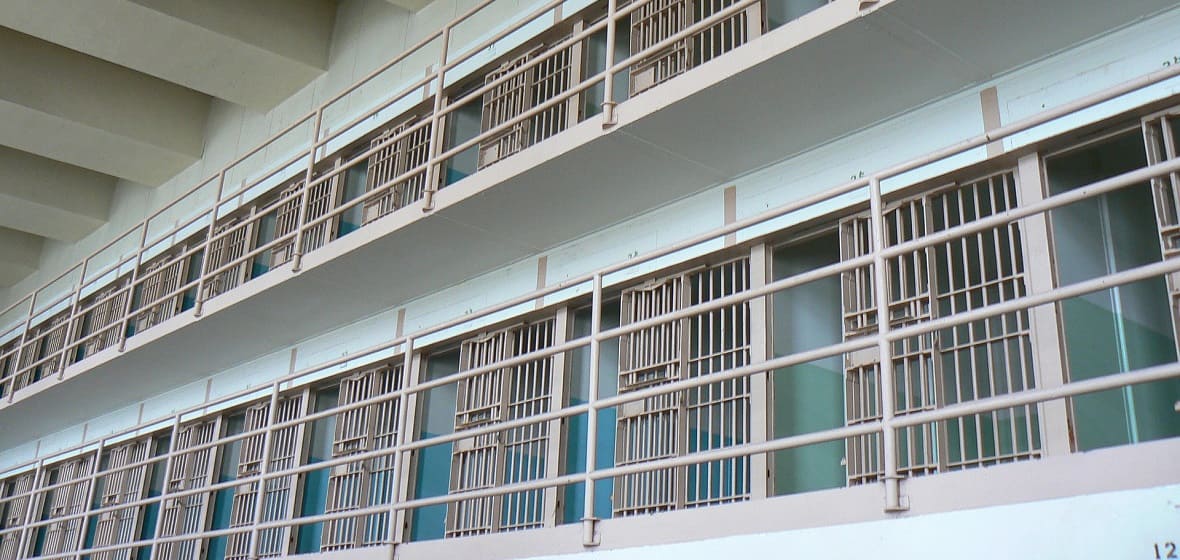Two College of Liberal Arts professors boldly teach classes - one in criminal justice and one in English literature - behind bars. Jennifer Lanterman, associate professor of criminal justice, brings along her students to the Washoe County Detention Facility to learn directly from the inmates in jail to gain real-world experience about the justice system. Justin Gifford, associate professor of English, teaches an American literature course to inmates of the Northern Nevada Correctional Facility to offer a service-learning course to the prison community. Although the teaching methods and reasons for teaching are slightly different, both professors say it's their favorite class to teach.
Lanterman teaches her criminal justice 400-level course out at the county jail every spring. It's based on the "inside out prison exchange program," which is an international program designed to bring college students and inmates together to learn about the justice system. In her course, Lanterman provides an overview of the criminal justice system in its various components by exploring theories of behavior, philosophies of punishment, rehabilitation, victimization and restorative justice. The course also analyzes how the justice system should work and students look at alternative ways to respond to a crime that is not being implemented in the United States currently.
Lanterman said it's quite common for people to be involved in the system, in fact, one in 60 American adults are on probation. But everyone only talks about it with other people like them. College students talk to other students about criminal justice and inmates talk to other inmates about the system. "When we bring together a class to have these conversations, everyone gets a more complete system overview," Lanterman said.
College students tend to leave the class with a better understanding of what it means to have liberty and autonomy restricted. Both students and inmates realize throughout the course of the biases they have developed. "They think of the criminal justice system in their own experience and they learn to contextualize their experience in a normal situation," Lanterman said of the inmates. She also said it's very different for the college students to take a tour of the jail from the outside than it is to sit and engage with the inmates behind bars.
Her goal is to change her students' viewpoints. She also wants the inmates to have a positive experience about education. Lanterman said education is a preventative factor for repeat criminals. If she can encourage inmates to be excited to learn and have a desire to continue their education after jail, then perhaps it will help the community by reducing the risk of repeat offenders.
She also wants this course to give college students real-world experience into the interactions they will have with people in the system after graduation and in their professional lives. "It's always better as a practitioner to have a more comprehensive understanding of the system and the people in which you're working with," Lanterman said.
For Gifford, one of the goals of his American literature course in the prison is also to help provide a positive learning experience for the inmates. Although he doesn't incorporate college students into his course now, he hopes to include them in the future.
Like Lanterman, Gifford also noticed the hesitation in inmates wanting to participate in class. They originally think people from the outside are there to judge or study them. So he started the class with an autobiography called Pimp: The Story of My Life, by Iceberg Slim. He chose a book that spoke to the inmates' individual experiences as prisoners, one that would use familiar concepts and slang.
Throughout the course, Gifford moves the inmates further away from their lived experiences but still get them to reflect on their personal lives. He used the book The Handmaid's Tale, by Margaret Atwood. Gifford said his students are more resistant to identifying with female points of view, which is what the novel portrays.
He also includes books like The Great Gatsby, Adventures of Huckleberry Finn and The Bluest Eye in his course. "I am expanding their viewpoints on the world through these books," Gifford said. He has enjoyed seeing the change of inmates' opinion about the course over the semester. The class ranges in age from 18-80 and some of the older inmates he thought would never speak, have shown up more prepared to have a conversation about the readings.
"Privacy is the number one commodity in prison - so this is a protected space in the classroom because it's just me and them for one and a half hours and they can say whatever," Gifford said. "When we're in that class, none of their past matters." One of his current incarcerated students has a higher education background and is not even 20 years old. Gifford said the student has told him if he could go back in time, he would approach life differently now.
"I think people make terrible mistakes, and I have a philosophy of compassion in my heart and that guides my desire to teach these folks."
Whether teaching people in confinement or traditional college students, it's the impact education has on someone's future that's important. Regardless of a student's background, professors like Lanterman and Gifford are making a difference in the community.











